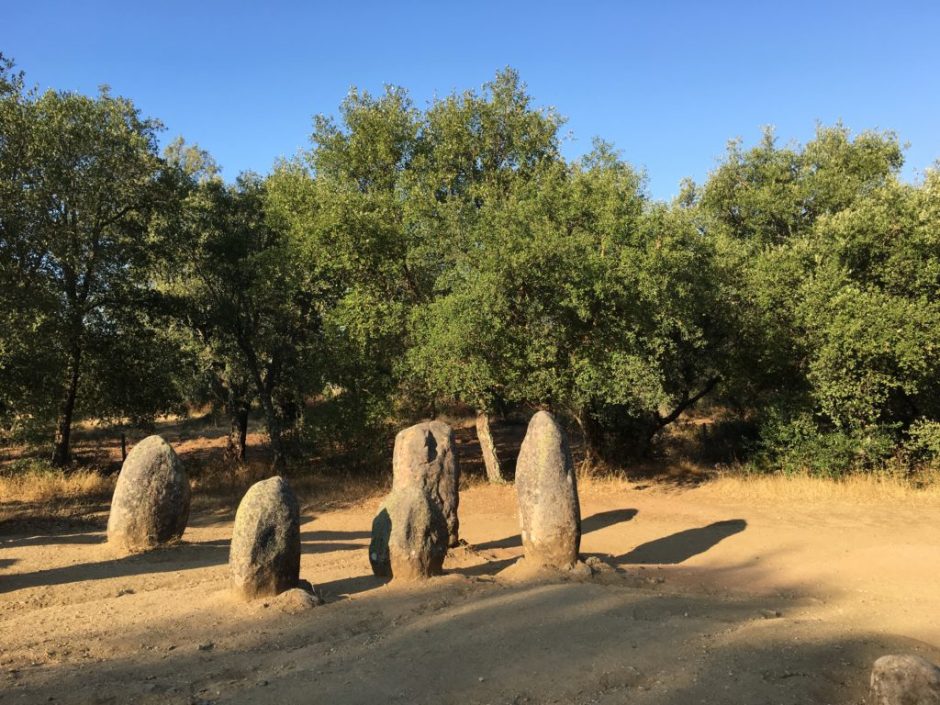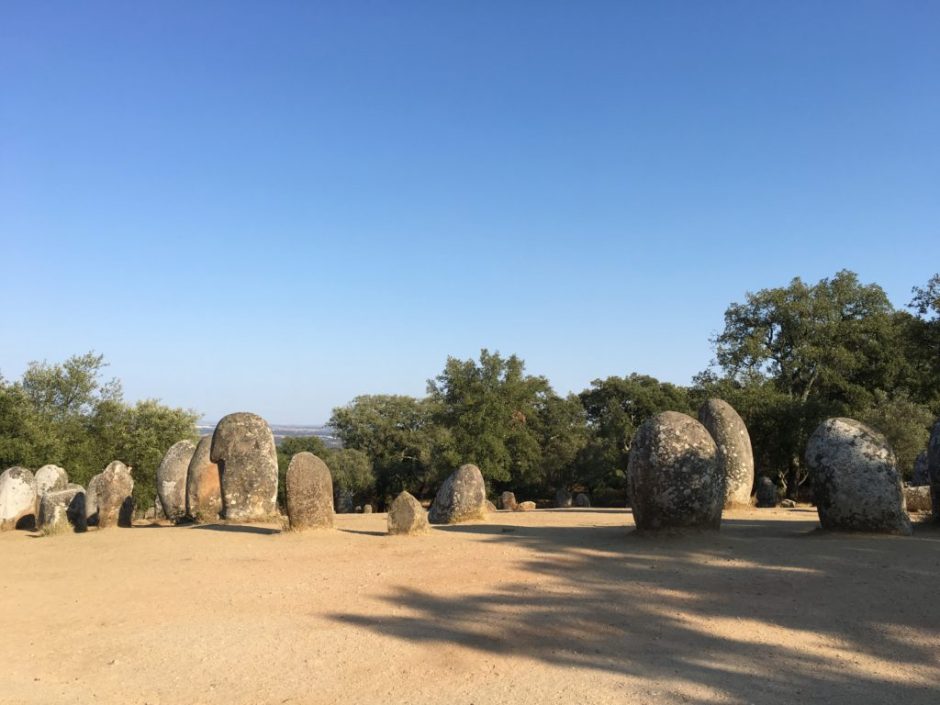Portugal’s second largest city, Porto, or Oporto as the British called it, has a vibrant cultural scene, beautiful churches and a fascinating history, but for many, it’s all about the port.

Port!
Port and port tastings draw visitors from all over the world —after all, the city is named for the fortified wine. All the big port houses are here, along with smaller cellars worth investigating. Just across the river in Vila Nova de Gaia, you’ll find Sandeman, Taylor Fladgate, Grahams, Ferreira, Calem, Croft, Cruz, Ramos Pintos, Kopke, Cockburn and many others. Individual port houses vary in their offerings– there are guided tours, self-guided visits, port tastings, retail shops and several have restaurants on site.

Since there is so much to do in Porto and we had already spent time in the Douro Valley where the grapes for port are grown and the production of the fortified wine occurs, we decided to visit just one port house. We chose Taylor Fladgate because we also wanted to have lunch at Barao de Fladgate. Food is an important part of the travel experience!
Taylor offers a self- guided tour (with audio available in English) and port tastings in the garden afterwards. No reservations are needed for tours but they are required for lunch.


We thoroughly enjoyed our tour, which covered the history and “how to” of port production, interesting information about the families behind the cellar, and included a short film, static exhibits, photographs, and a cellar visit.
Afterwards we were entertained by a group of peacocks and one very loud, very busy rooster who was clearly in charge, during our tasting in Taylor’s garden. There is also a well-stocked shop on the premises with relative bargains compared to the prices you’ll pay in the U.S. for ports of this quality.



Taylor Fladgate is the only port house we visited in both our visits to Porto, so we can’t give details on the others, though Grahams was also highly recommended. Check with all those you’re interested in for specifics.

A water taxi goes back and forth from Porto to Vila Novo de Gaia for about 3 euro. It’s a short but pleasant ride and sometimes you can see the local boys jumping off the lower level of the Eiffel Bridge to the river below.

If you are a serious port person or just want to learn more and sample some of Portugal’s best known export, look into a visit at the Douro and Port Wine Institute’s Interpretive Center. A word of warning – port is a high alcohol, fortified wine so taste judiciously.
Museu Serralves– Contemporary Collections

As we said, there’s much more to Porto than port. For contemporary art lovers, the Museu Serralves is a top draw. The museum, which showcases contemporary art from the 1960s through the present, recently celebrated its 30th anniversary. Its vast collection includes more than 4,400 works either owned by the foundation or on long- term loan. Located in a beautiful park-like setting, it’s easy to reach by public transport, cab or Uber.



There was so much to see and experience, we wound up spending almost all day at the Museu Serralves.

Museu National Soares dos Reis–– Porto’s First Public Art Museum
The oldest museum and first public art museum in Porto, the Museu National Soares dos Reis has been located in the beautiful 18th century Carrancas Palace since 1940.


A 1934 terracotta sculpture by Canto da Maya is one thousands of pieces on display at Porto’s very first public art museum.
The museum was created as a repository for confiscated property seized when monasteries in Porto and other Portuguese cities, like Coimbra, were dissolved by the government.



The museum’s collections include sculpture, paintings, textiles, furniture, ceramics, jewels and works such as a Roman sarcophagus found in the Alentejo region dating from the 3rd century, an 18th century French tapestry that tells the life story of Portuguese explorer Vasco da Gama, and contemporary sculpture by Portuguese artists like Pedro Valdez Cardoso.
Portuguese Centre of Photography
Stories of spycraft, crime and photography converge at the Portuguese Centre of Photography near the Torre dos Clerigos. Yes, there are photo exhibits, but there’s much more in store for visitors here. The building itself, a former prison, is part of the story.

Visitors can see cameras of every description including rare daguerreotypes, antique wooden cameras, spy cameras, and even disposable cameras. There are also exhibits about the prison and the people incarcerated within its walls, including political prisoners during the dark days of Salazar’s reign.

The museum has revolving photo exhibitions as well as a permanent collection. We saw a fascinating exhibit of photos by and about the artist Frieda Kahlo.



Clerigos Tower– Torre dos Clerigos
While you’re in the area, consider a visit to the Clerigos Tower–– Torre dos Clerigos. A beautiful example of baroque architecture and a national monument since 1910, the tower offers expansive views of Porto.

Free or guided tours of this Porto landmark are available.
Se do Porto — The Cathedral of Porto and Churches Worth a Visit

The Catholic Church has a major presence in Portugal and Porto has many marvelous churches filled with exquisite paintings, sculpture and azulejos. Visit the magnificent Porto Cathedral (Se do Porto) located in the Batalha area, the highest point in the city for the art and the views.
Though you’ll often read travel stories where you may be directed to “visit the Se Cathedral”, Se is the Portuguese word for cathedral, like duomo in Italian. Igreja means church. It is free to enter the Se but there is a small fee to visit the tower.

The Church of St.Francis or Igreja de Soa Francisco, Igreja do Carmo and the Carmelitas Church right next door, are also worth a visit.

Located in Porto’s historic center in the building it has occupied since the mid 16th century, MMIPO, the Museum of the Church of the Misericordia is worth a visit for its paintings, sculpture, religious articles and exhibits that tell the history of Porto’s Holy House of Mercy and the city itself. A visit to the museum includes entry to the church and is the only way to see it.


Shop
If retail therapy is what you’re after, head over to Rua Santa Catarina. Santa Catarina is Porto’s main shopping street and is in the highest part of town, beginning at Praca da Batalha.

You’ll find all the well-known international brands and plenty of smaller, local stores along the busy street, as well as cafes and coffee shops including the famous Majestic Cafe.

Nearby, you’ll find Porto’s main market —Mercado do Bolhao. This is the place to pick up picnic provisions. If you’re lucky enough to have lodging that includes a kitchen, you can find fresh produce, charcuterie, cheeses, meats, and fish—everything you need to make a marvelous meal.
Sao Bento’s Azulejos
If you arrive in Porto by train and happen to come into the Sao Bento railway station, you’ll be treated to a remarkable display of azulejos – the fabulous blue and white tiles so famous in Portugal. Many people come to the station just to see the tiles, as we did.

Rua da Ribeira Negra– Buskers, Bars and Boat Rides
The Rua da Ribeira Negra area is very busy and touristy but it is fun to walk along the river and enjoy the buskers and people watching. We saw people dancing, making music, and performing magic tricks.


Most boat rides on the Douro River depart from Rua da Ribeira. We took an hour- long cruise–it was a nice ride and especially fun on a hot day! We did not book ahead—boats run regularly and there are a number of companies offering the same rides at the same prices. We picked the one leaving the closest to the time we wanted to go.


Souvenir vendors line the riverfront. If you’re looking for cork products, tea towels and “typical” Portuguese goods, you’ll find them here.


Sleep
Here, as in most cities, there are lodging options for all tastes and budgets. We stayed at the Eurostars Porto Douro just a 10- minute walk along the river to the Rua da Ribeira Negra area. The hotel is comfortable, clean and well- priced. Our large room had a little kitchenette perfect for making a cup of tea or a snack and the view from our balcony of the Eiffel Bridge, the boats and people passing up and down the river was unbeatable.


Breakfast was included in our rate and offered everything we could want from hot dishes to yogurt, fruit and pastries, including the Portuguese specialty pasteis de nata. The clientele was international and Americans were definitely in the minority here. We met some terrific fellow travelers and the front desk staff couldn’t have been more helpful.
The hotel has a well-priced laundry service (shirts were about 7 Euro), important since we rarely check luggage. There is not a full-service restaurant at the Eurostars but there is a bar serving light fare. There’s also a rooftop terrace with spectacular views and bar service during the summer months.

We also enjoyed a too-brief stay at the historic Infante Sagres Hotel in the heart of Porto. After an absolutely awful experience with the Rosa Et Al Townhouse’s self-catering apartment on our first visit to Porto, we sought refuge at this magnificent grand dame of a hotel with its lux lobby and beautifully appointed rooms. The elevator has vintage alligator- covered seats so guests can sit and enjoy the ride!



We were lucky to get even one night here at the last minute on a sold-out weekend. Somehow the front desk staff managed to book the next four nights for us at the Eurostars. We will always be grateful for their kindness.

Whether port is your preference or art floats your boat, lace up your walking shoes and discover the myriad charms Porto’s winding, cobbled streets have to offer.








































































































































































































































































